A Case of Capital Ferrophilia
Morning all...
As I let on elsewhere, we went on a little day trip to Berlin yesterday, where I was able to do some (to me) urgent catching-up on what's been going on in the local public transport scene since my last visit. That had been in 2004, actually, so my personal goal was capturing some impressions from suburban and underground operations in the capital. Knowing full well that I wouldn't be able to really see it all within just one day!
Having disembarked from ICE 1724 on the underground level of Berlin Central Station – comprising the north-south platforms – after a ride having taken just a little over an hour, I first proceeded up to the stations "Stadtbahn" level with the west-east platforms. There, platforms 15 and 16 are set aside for suburban services...
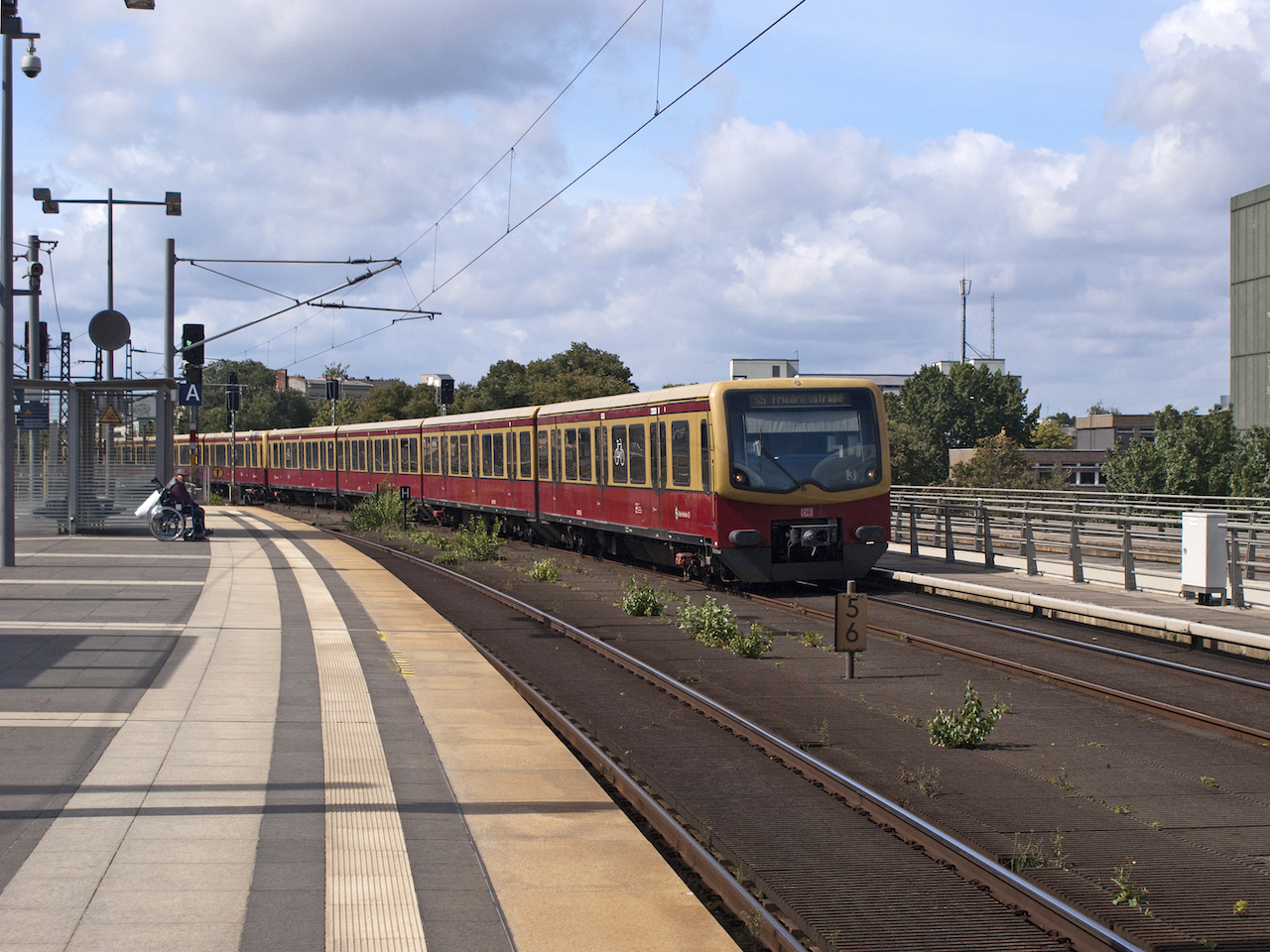
...which many of you will probably know to be one of just two 3rd rail mainline operations in Germany – the other being Hamburg's suburban railway system.
The Berlin suburban system was the first to have been formally called "S-Bahn" and has pretty much always been a self-contained sub-division with a specific set of operating rules on top of the baseline National Railway Operating Regulations. At this time, Berlin's suburban network comprises fifteen lines, all powered by 750 V DC through bottom-contact conductor rails.
The current mainstay of the Berlin suburban fleet are the class 481 EMUs, in spite of them having been hampered by difficulties relating to their wheelsets during the past few years. It did take a lot of effort and some serious finger-slapping by the Federal Railway Authority to get Deutsche Bahn's S-Bahn Berlin sector, also prompting the reactivation of a number of withdrawn class 485 sets to build up motive power reserves.
Due to planned engineering work, the S5 and S7 lines usually working the "Stadtbahn" west-east trunk line are currently not in operation between Friedrichstraße and Ostbahnhof, so here, we see a rake of 481s working the S 5069 service to Friedrichstraße.

It is something of an anachronism that Berlin's suburban lines should still operate with a mechanical train stop device till this day. You will notice this bent metal rail next to the base of the signal: This is folded down while the corresponding signal is at danger, and in the event of a train passing will trigger a power cut-off and brake application lever on the bogie frame. These mechanical train stop devices but are to be replaced by a newly developed electronic train protection system called ZBS, derived from ETCS.

I then rode out to Wannsee Station on the S7 line. Wannsee is the southwestern terminus for this line and also served by the S1 line from Potsdam Central Station to Oranienburg and Frohnau (plus peak hour short turn workings between Potsdamer Platz and Zehlendorf outside the school holidays). Here, 481 369 was the first of a four-unit "Vollzug" on the S 7069 service to Friedrichstraße. Also note the train stop being folded up as the signal is showing clear.
Trains on the Berlin suburban lines are formed with a maximum of four two-car units. Each individual unit is called a "Viertelzug" ("quarter unit"), so two-unit formations are referred to as "Halbzug" ("demi-unit"), three-unit formations as "Dreiviertelzug" ("three-quarter unit"), and four-unit formations as "Vollzug" ("full unit").
The class 480 sets, one of which we'll be seeing later, are the only type to have cabs on both ends, while the 481s and 485s have one cab and a shunting control desk at the non-cabbed end. The 481s can therefore work with a minimum length of two units coupled back-to-back, but are most commonly seen working as Dreiviertelzüge and Vollzüge, except where platform lengths prohibit these formations.
Five hundred 481s were built from 1996 till 2004, each Viertelzug being 36.8 metres long, 3.14 metres wide and 3.59 metres high. They are configured as Bo'2+Bo'Bo', with a power output of 594 kW and a maximum speed of 100 kph.

Each 481 set has four pickup shoes, one on either side of the outermost bogies.

It was interesting to see the name plates at Wannsee Station still being designed with blackletter script.
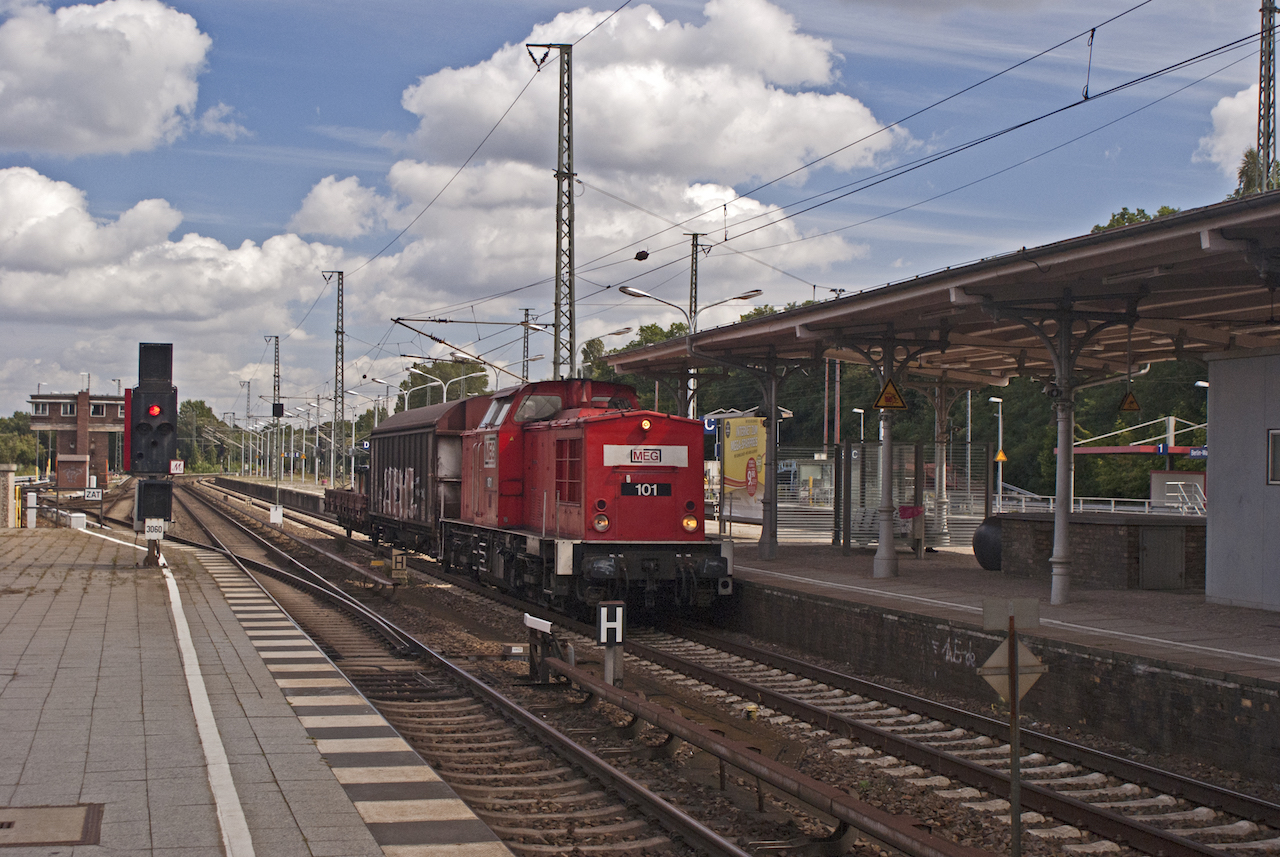
While at Wannsee, I also spotted MEG 101, or 204 358, with a short trip freight.

And here, we see 481 443 leading a Dreiviertelzug on the S1 line, working the S 1570 service to Frohnau. Due to their peculiar inverter noise, the 481s are often nicknamed "Air Raid Sirens" or "Circular Saws."
I then rode up to Innsbrucker Platz in order to transit to the underground...
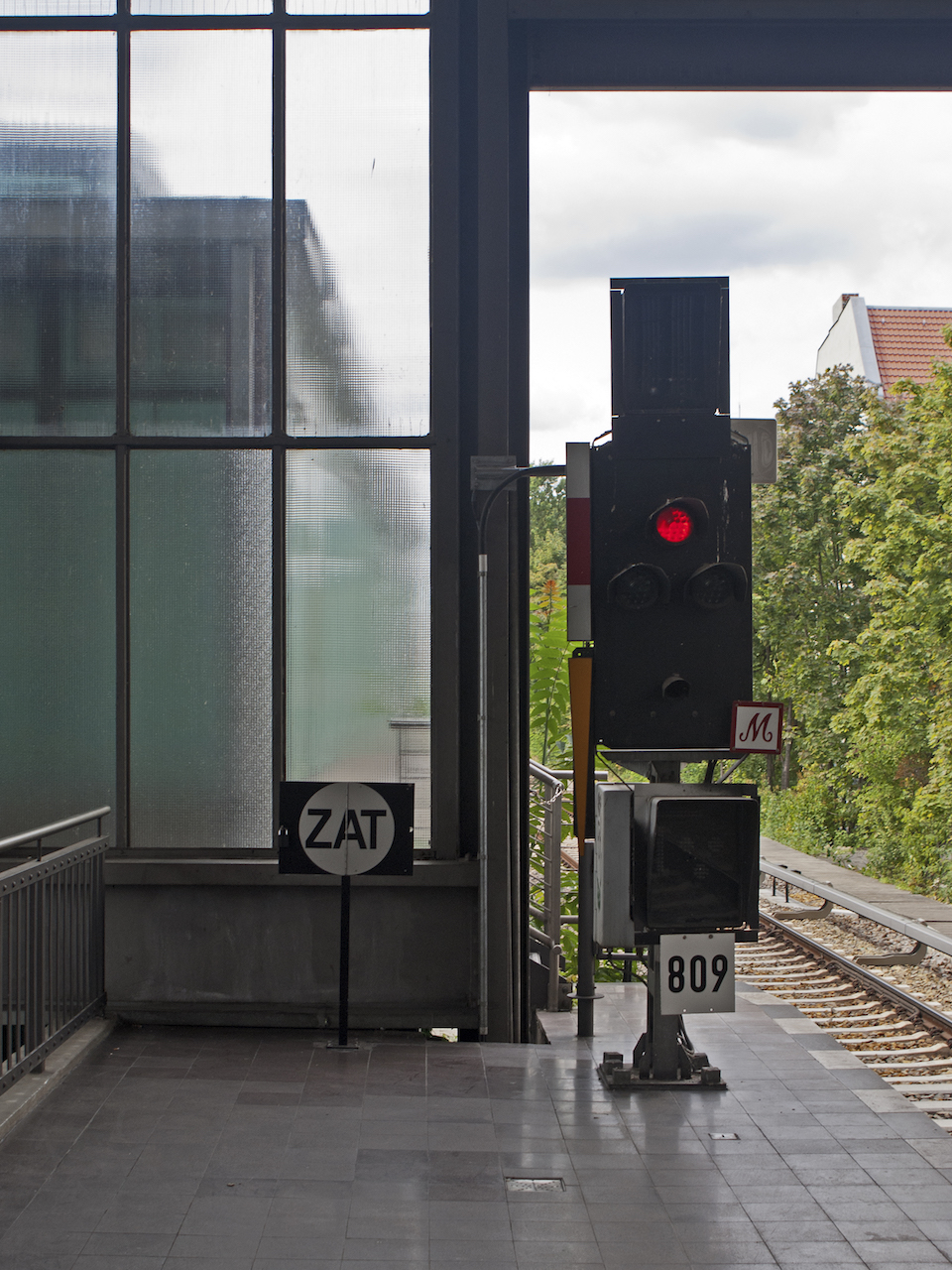
...and while there, also took this snapshot for the westbound signal for those of you with an inclination to signalling. Due to its role as a tightly timetabled commuter railway, the Berlin suburban system was among the first to be outfitted with multi-aspect, combined home and distant signals, which were also introduced on Hamburg's suburban railway. In Berlin, all of these so-called "Sv" signals have been replaced by Ks type signals by 2006.
The red "M" plate attached to the signal is a feature specific to Berlin, which permits passing a failed signal after spoken agreement by the signaller.
The "ZAT" board next to the signal is related to the "Zugabfertigung durch den Triebfahrzeugführer" one-man operation procedure which has been introduced to the Berlin network for the past several years. Traditionally, all stations were crewed with attendants who were responsible for train dispatching, but as a cost-cutting measure, this practice is to be reduced to 86 out of the 166 suburban stations in Berlin.

Electronic passenger information displays have been installed at the majority of stations throughout the system. Here, you can see a S41 "Clockwise Ring" service and a S45 service to Bundesplatz, both as Dreiviertelzüge, being announced for the next departures. There also is a S42 line working the Ring Line around Central Berlin counterclockwise.
After that, I went underground, and came across this friendly suggestion at Innsbrucker Platz:
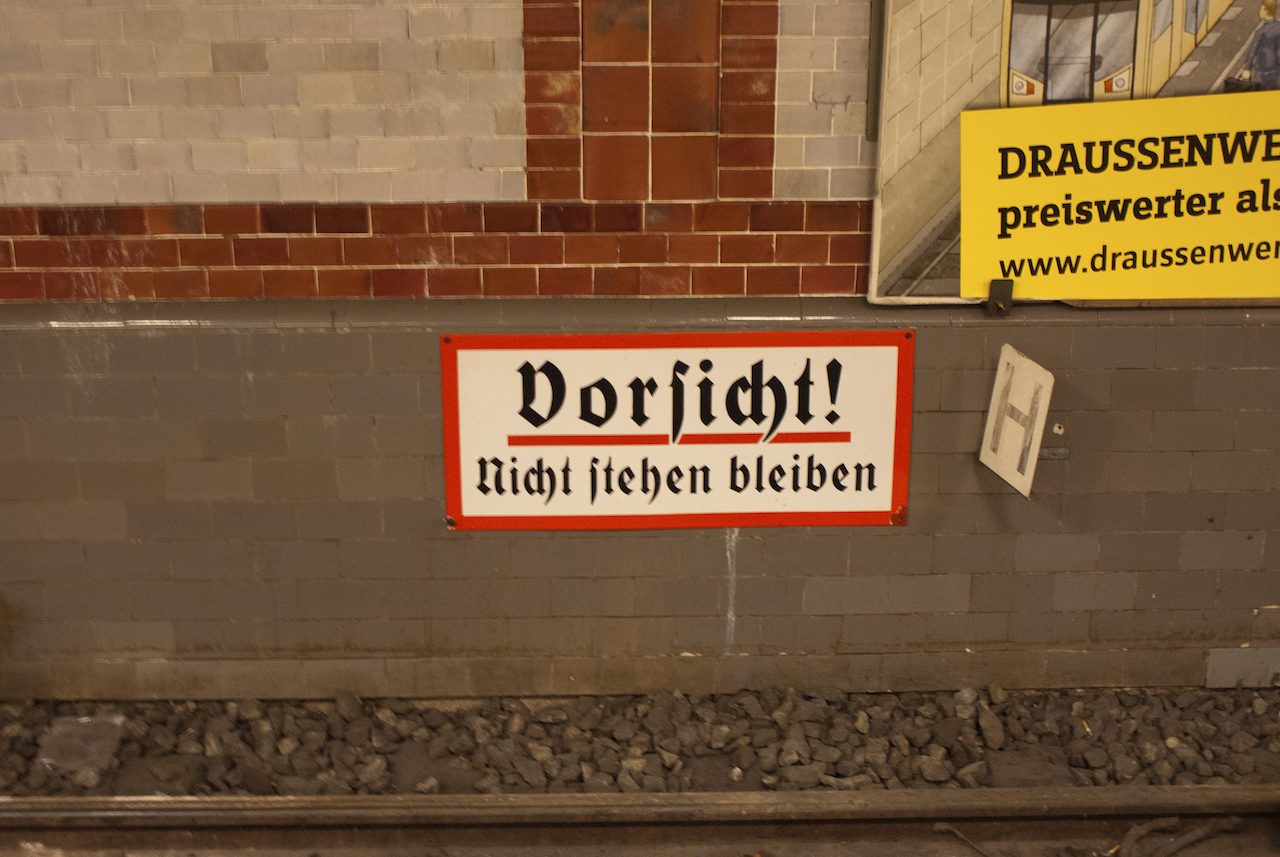
...or else!
(I understand this is an advice to train drivers to ensure they do not come to a halt with the train protection transceiver right atop the trackside balise to avoid malfunctions.)
Now, many of you will most likely know that the Berlin Underground technically consists of two independent networks – not unlike the situation on the London Underground. Lines U1 through U4 comprise the "Small Profile" network with cars 2.30 metres wide and top-contact conductor rails with positive polarity, while lines U5 through U9 form the "Large Profile" network with 2.65 metres wide cars and bottom contact conductor rails with negative polarity. Except for some departmental stock, trains can only operate on the network they were built for.
The "Small Profile" network was designed by Siemens & Halske, and originally built as an elevated railway. The first section from Stralauer Thor to Potsdamer Platz – roughly corresponding to the main section of what today is the U1 line – was opened in 1902. The first "Large Profile" lines were built and opened in the 1920s.
Innsbrucker Platz also is the southern terminus for the U4 line – the second shortest of the Berlin Underground lines with five stations and a route length of just 2.9 kilometres. At the northern terminus at Nollendorfplatz...

...I captured Car 776, standing by for the next trip to Innsbrucker Platz. Due to the short distance and ridership numbers to match, the U4 line is worked with single units.
776 is one of 66 A3L71 cars to have been delivered in 1972 and 1973. These, in turn, are part of the larger A3 Stock series, which comprises a total of 231 sets and which were built from 1960 till 1994.
Of course, there is a lot of variation between the various different subtypes, outlining which in detail would most likely be rather tedious for you to read up right now. Generally speaking, and across subtypes, A3 Stock is 25.66 metres long, 2.3 metres wide and 3.18 metres high, with a maximum speed of 62 kph. All wheelsets per unit are powered, with individually powered wheelsets and indeed three-phase AC drive having been introduced on the latest subtype, called A3L92.

I then rode to Gleisdreieck Station – the name being slightly misleading today. Originally, this station was indeed configured as a wye, but rebuilt with two independent platform levels in 1912 and 1913 following two serious collisions in 1908 (killing 17 persons and injuring 18) and 1911.
Here, A3L71 car 704 is leading a U2 service to Theodor-Heuss-Platz, just prior to calling at Gleisdreieck.
After that, I proceeded east on the elevated part of the U1 line.

This was Hallesches Tor, with 484 leading a service to Uhlandstraße. 484 is an A3E car, representing one of the thirty-two A3 64 and A3 66 sets to have been refurbished (or "Ertüchtigt", as indicated by the "E"). These were outfitted with chopper controls and various other improvements. Prior to refurbishment, 484 was designated 964.

This image, showing A3L92 car 639 leading a service to Warschauer Straße, might give you an impression of the U1's elevated route.
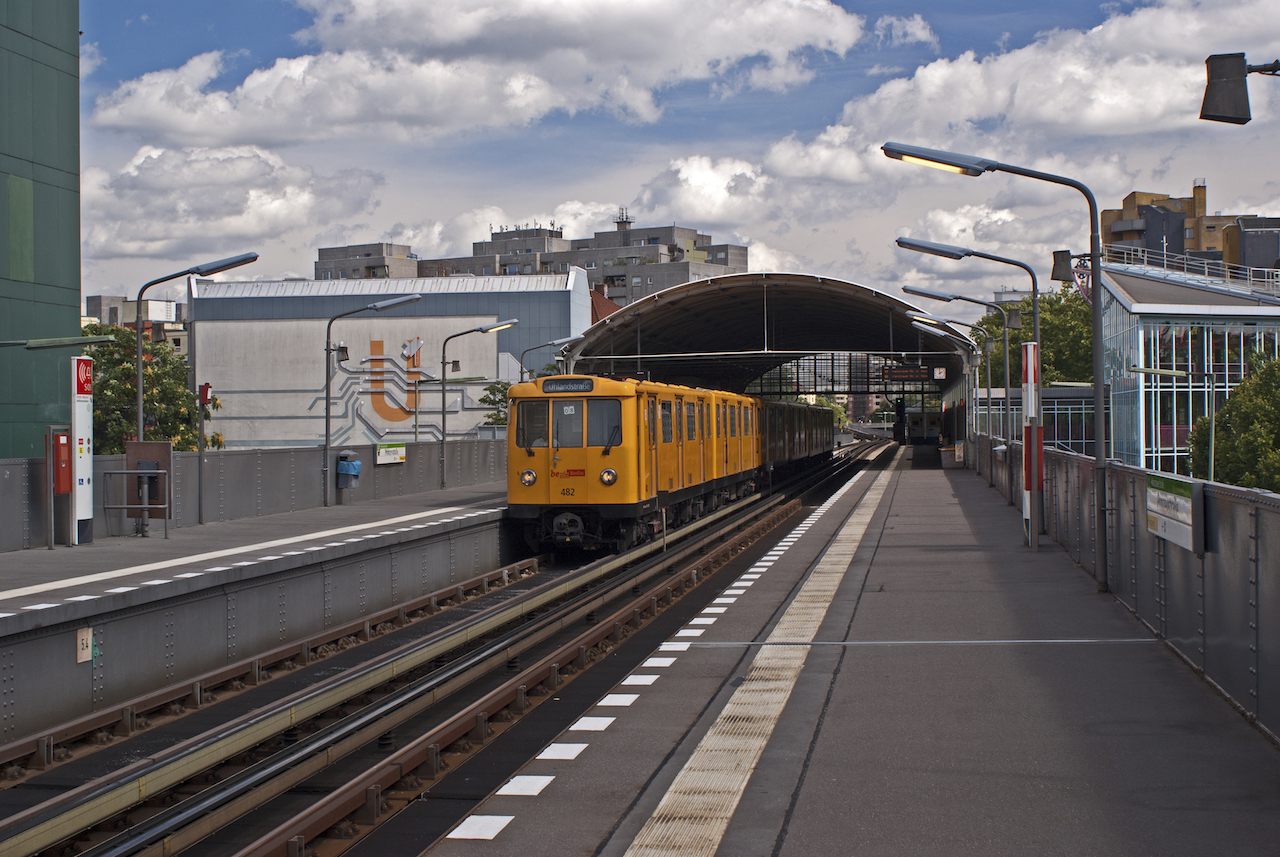
At Prinzenstraße, I captured A3E car 482 – previously designated 958 prior to refurbishment – at the head of the next service to Uhlandstraße.
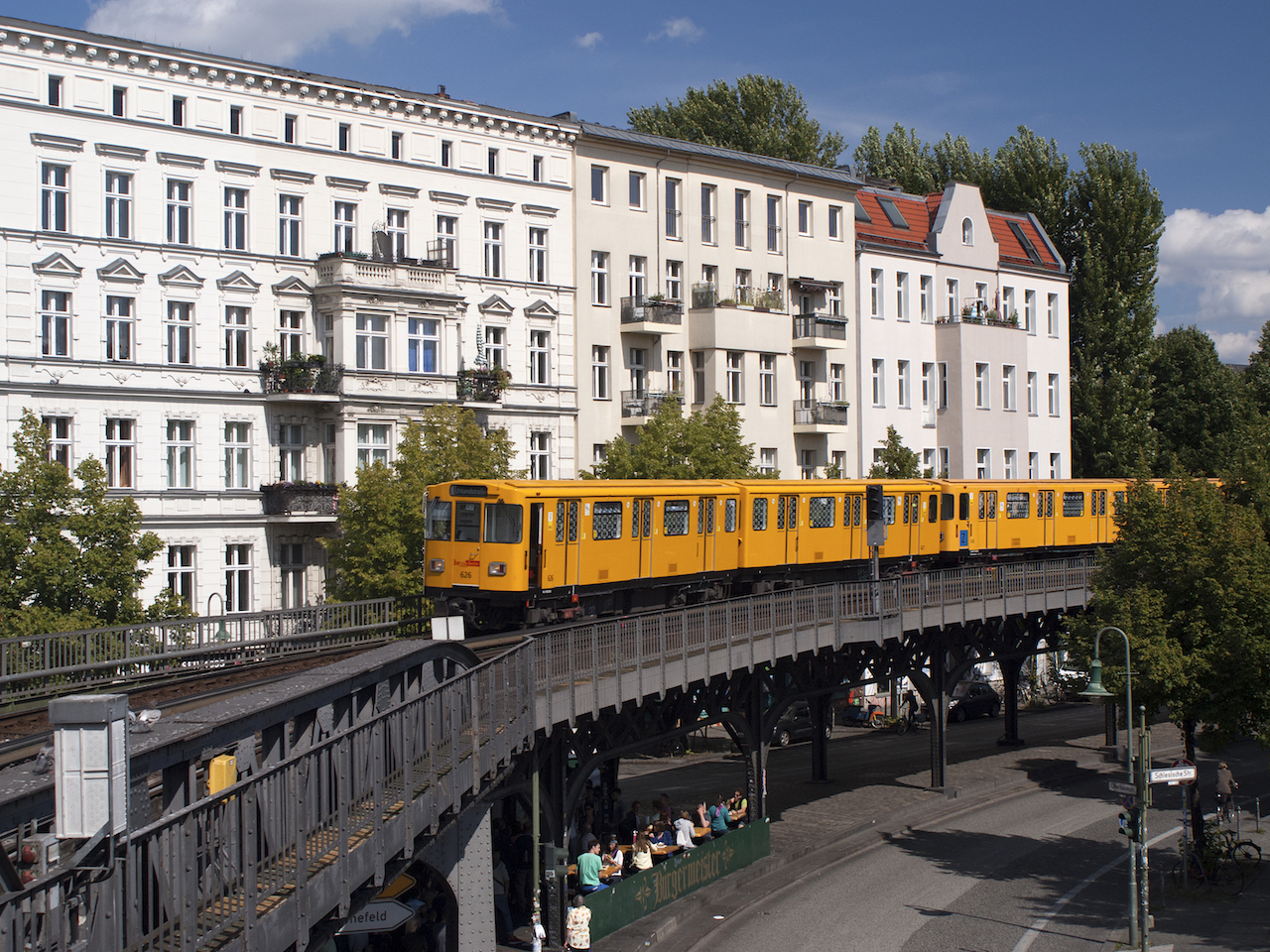
And at Schlesisches Tor, A3L92 car 626 was leading a service to Uhlandstraße as it snaked through the S curve just outside the eastern station approach.
The car immediately behind it is one of those cars outfitted with passenger counting equipment, which are marked with a black "Z" in a blue square on the cab doors.
Following a change to the S5 line at Ostkreuz, I then rode out to Wuhletal...
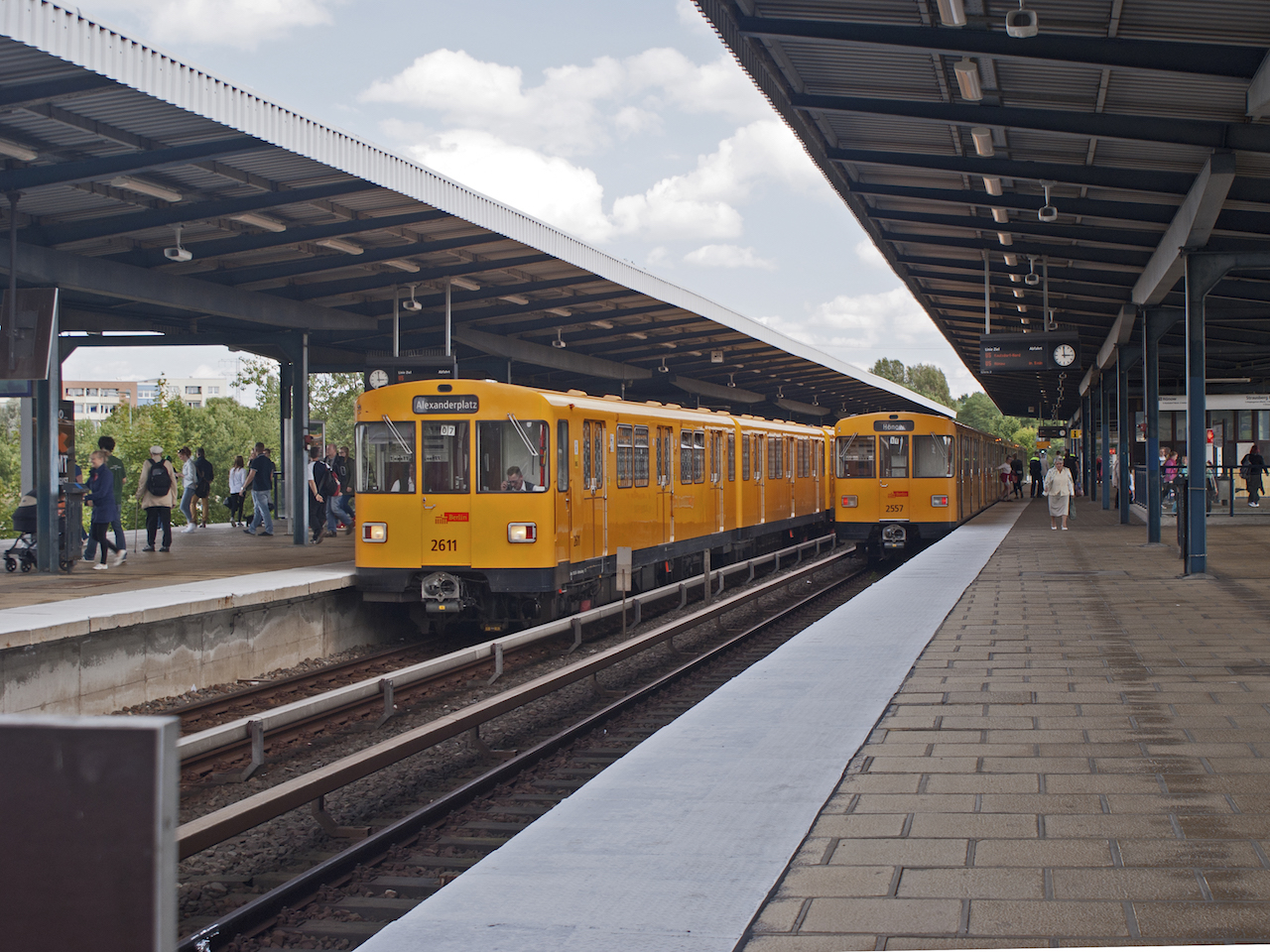
...which is a joint suburban and underground station. Suburban trains use the outer platform sides, while the U5 line uses the inner tracks.
Here, two trains composed of F76 "Large Profile" stock are waiting for departure – 2611 leading a service to Alexanderplatz and 2557 tailing one to Hönow.
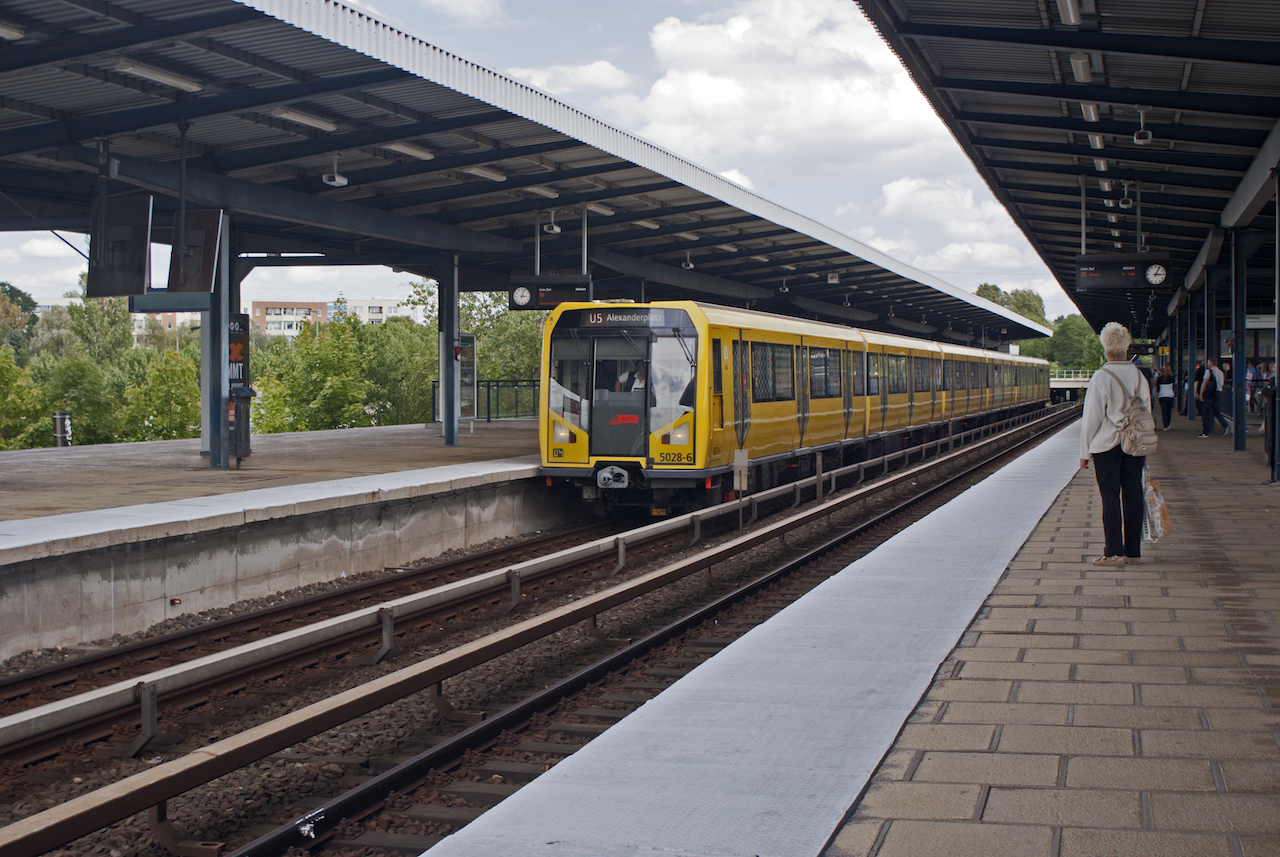
The U5 line is also worked by H Stock. These six-car, all-gangwayed units were built in three batches from 1994 till 2002, with a total of 46 sets having been built. Roughly during the same period, the similar-looking but smaller Hk Stock sets were procured for the small profile network.
Here, 5028 is calling at Wuhletal on its way to Alexanderplatz.
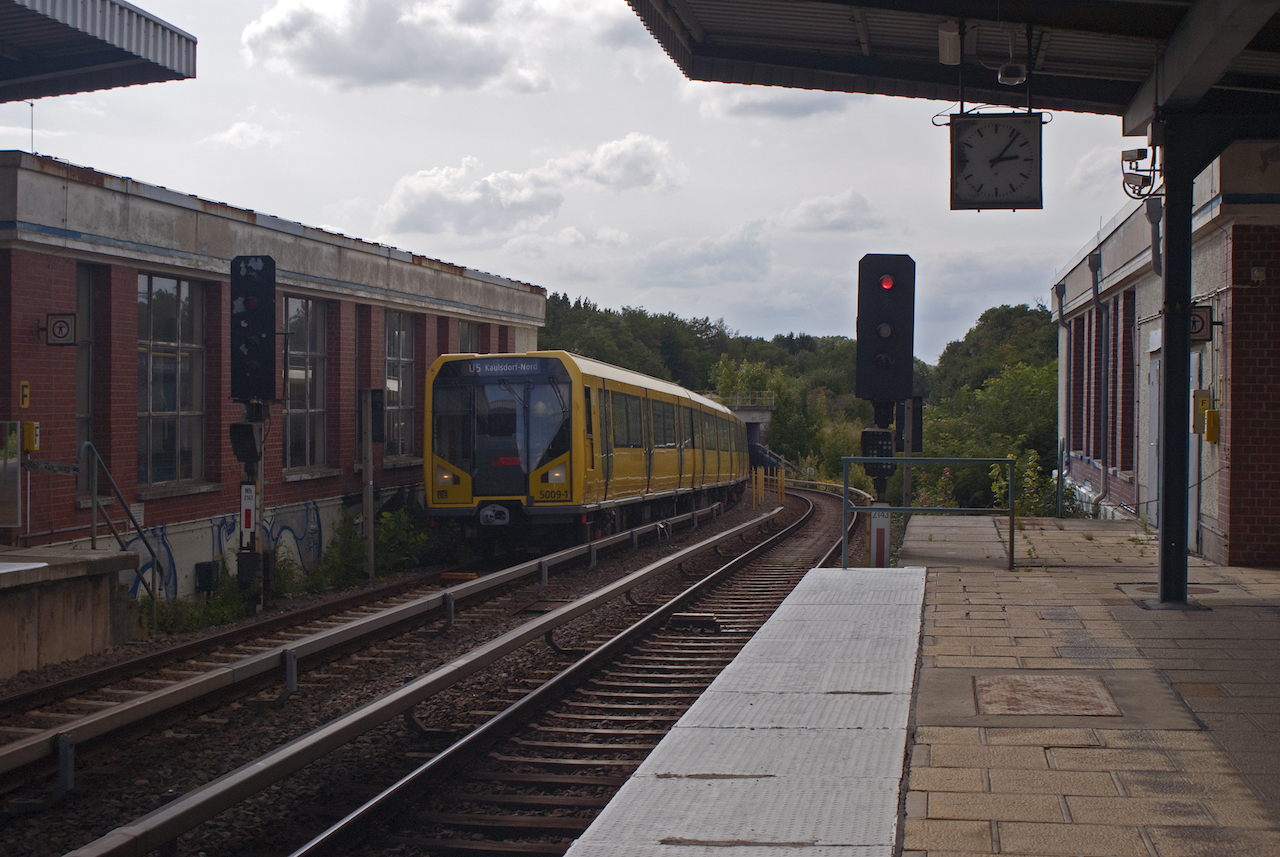
And, going the other way, 5009 is emerging from the tunnel on a short turn working to Kaulsdorf-Nord.
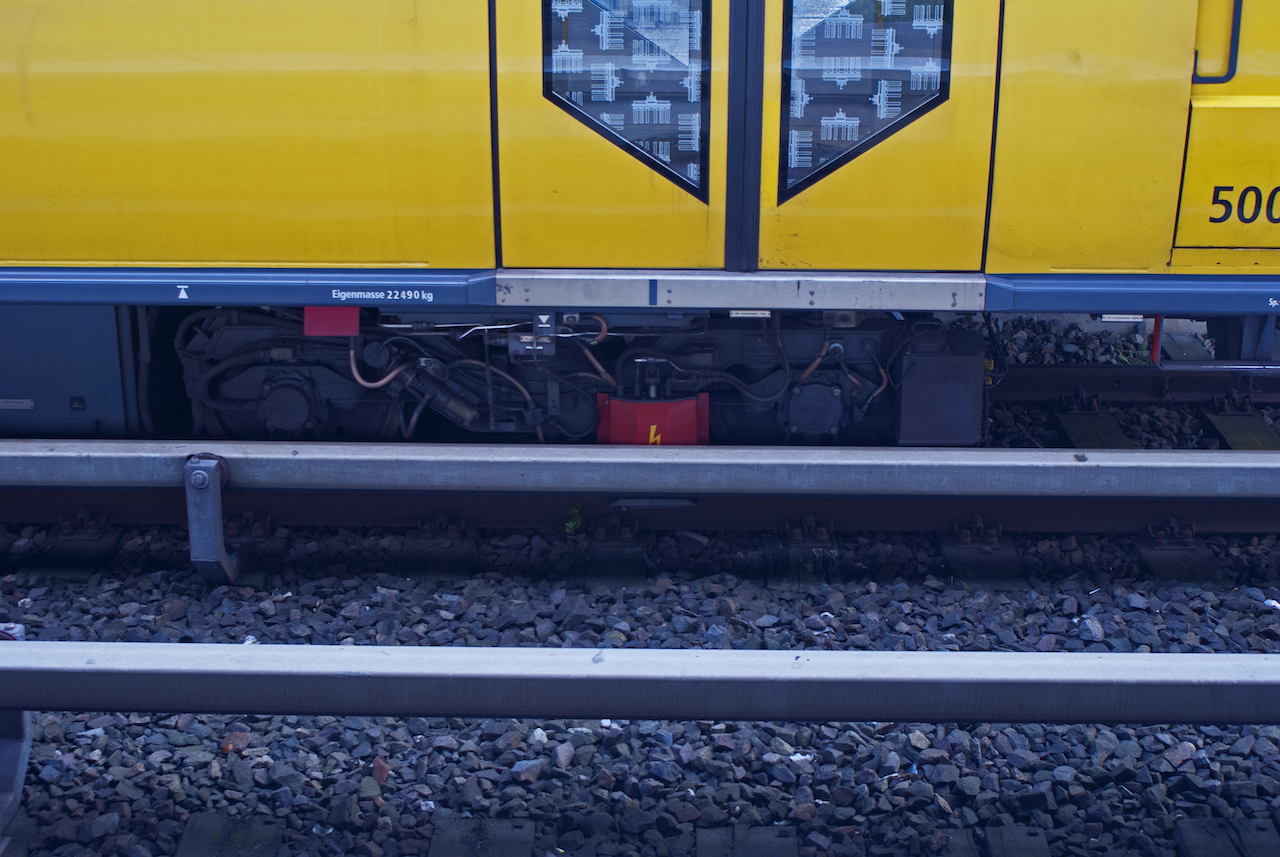
A quick look at the shoegear on 5009.
I then started to make my way back to Central Station where our train to Leipzig would depart at 4.52 pm...
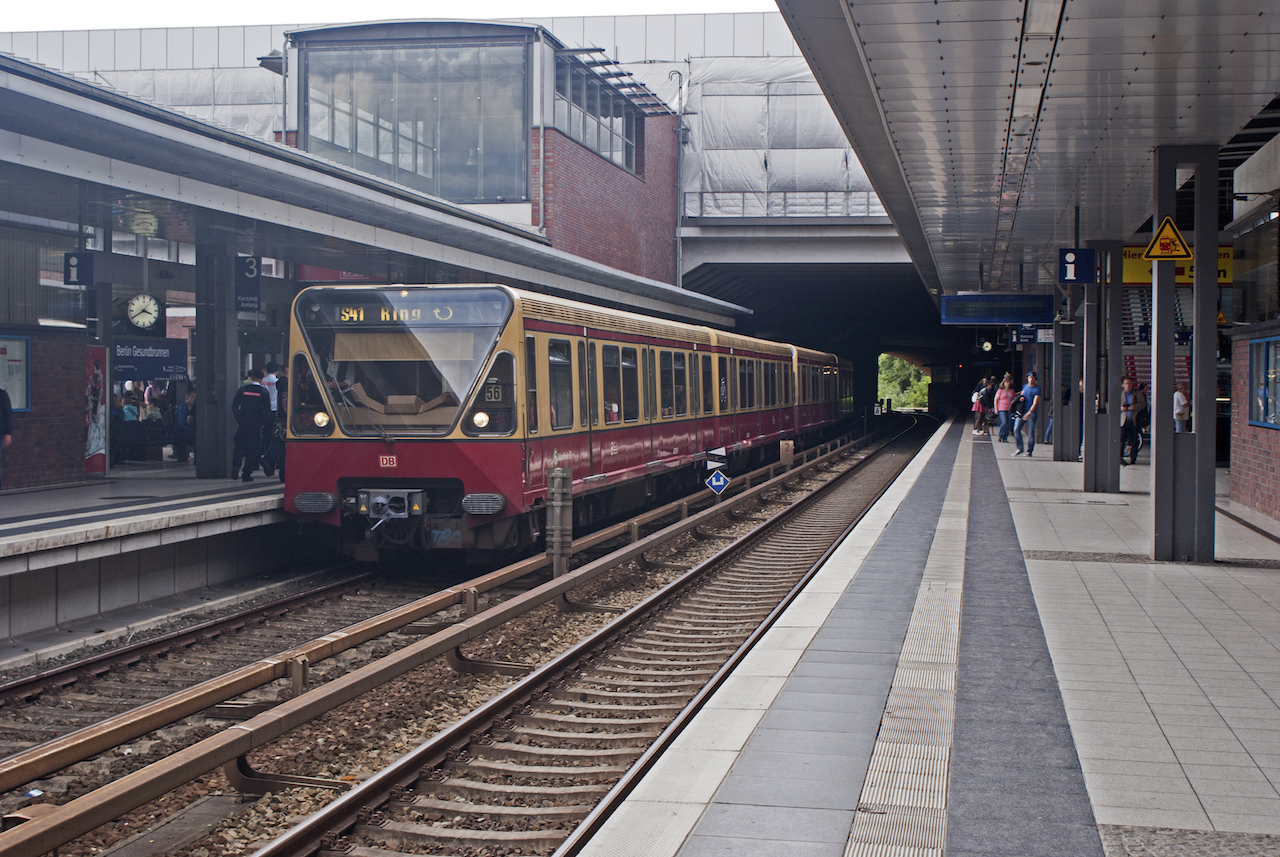
...but took some additional time for a look-see at Gesundbrunnen Station. There, I captured 480 078 working the "Clockwise Ring" S 41648 service.
The class 480 EMUs were procured at the time when the suburban lines in then-West Berlin were operated by the Berlin Transit Authority (BVG), following an ongoing dispute over the GDR's Deutsche Reichsbahn operating the suburban lines in West Berlin. After a strike which occurred in 1980 and which resulted in services in West Berlin being cut to just three lines, BVG were entrusted with operating the West Berlin network in December 1983. The 480s were intended to radically renew the West Berlin suburban stock inventory, which had been "donated" by Deutsche Reichsbahn and which had comprised the oldest units available at the time.
A total of 85 two-car sets were built from 1986 till 1987 and from 1990 till 1994. These are 36.80 metres long, 3.12 metres wide and 3.6 metres high, having all-wheel propulsion and a power output of 720 kW for a maximum speed of 100 kph.
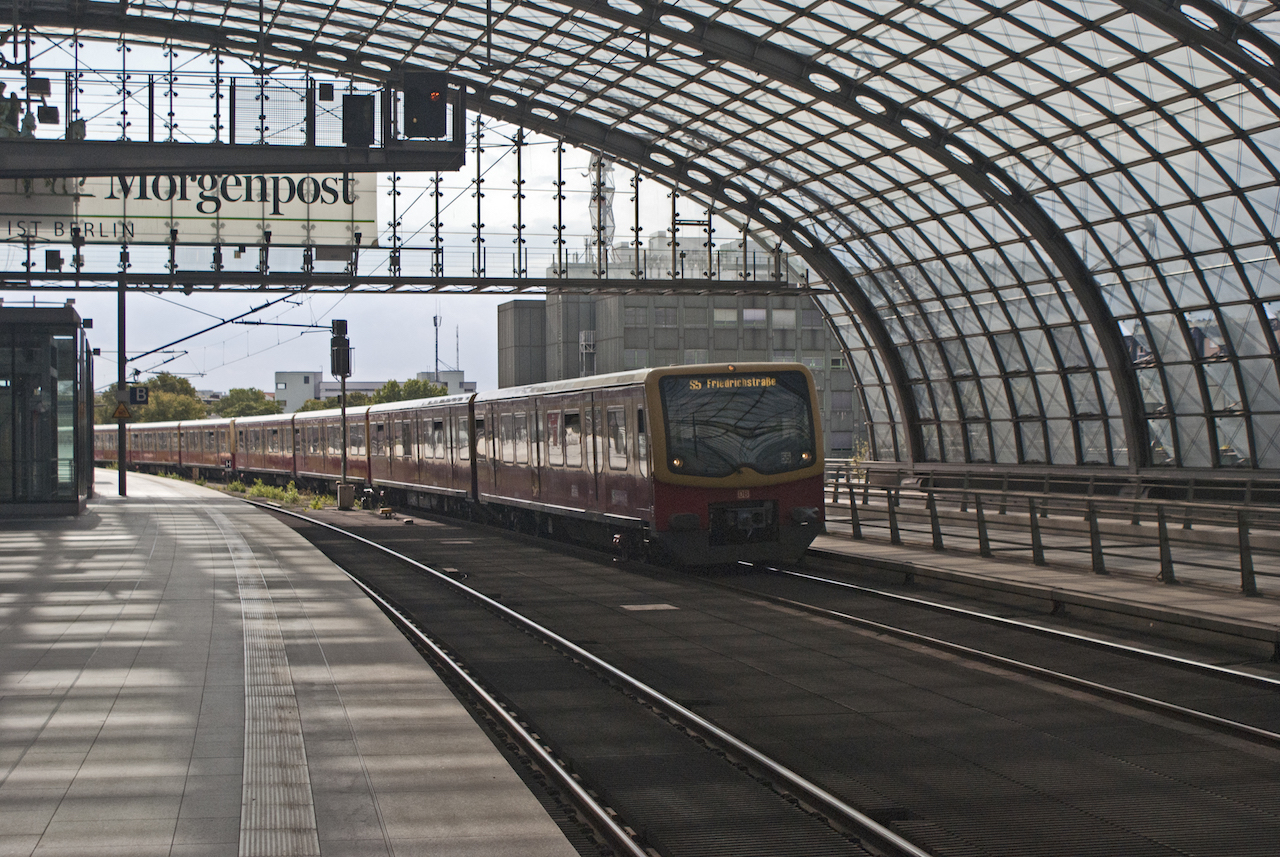
And upon returning to Central Station, I snapped 481 346 leading the S 5583 service to Friedrichstraße.
Thank you for reading and I hope you enjoyed this little photo strip!
-
 5
5




4 Comments
Recommended Comments
Create an account or sign in to comment
You need to be a member in order to leave a comment
Create an account
Sign up for a new account in our community. It's easy!
Register a new accountSign in
Already have an account? Sign in here.
Sign In Now